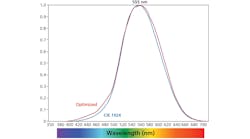According to Strategies Unlimited, around 15% of all high-brightness LEDs manufactured in 2003 were deployed in vehicles, representing a market value of around $400 million.
Exterior signal lightsAround 56 million light vehicles were produced in 2003, of which around 37% had LED-based CHMSLs. European car makers are the furthest advanced in adopting this technology, while the US continues to see modest growth. In contrast, the Japanese market is at the start of a major ramp for exterior LED signaling functions. However, only around 3% of new vehicles had LED-based stop, turn or tail lights.
Forward lighting with LEDs
Before then, LEDs will be used in daytime running lights (DRLs) or in fog lights. In January 2004, Audi announced that its new A8 would be the first production vehicle to feature DRLs based on white LEDs.
Interior Lighting
While the HB-LED market for exterior automotive lighting applications was worth some $110 million in 2003, the market for interior applications was more than double that figure, according to Strategies Unlimited. LEDs are now used as backlights in the instrument panels in around 80% of European cars, with manufacturers having adopted specific colors. In the US, the use of LEDs is still limited to a few high-end models, while Japan is witnessing rapid growth.
Reasons for using LEDs
OEMs are attracted by the potential to reduce energy consumption, and the space savings that can be realized using smaller LED fixtures. Both OEMs and consumers benefit from the styling potential of LEDs, which enable more attractive and distinctive designs, as well as the robustness and long lifetime of the solid-state light sources, which cuts down on maintenance. Consumers also benefit from safety factors, for example due to the faster turn-on of brake lights which reduces the risk of rear-end collisions.








